Jungle plants: 16 options for lush and leafy borders
Add the best jungle plants to your plot for an exciting mix of foliage, flowers and exotic colors in your garden

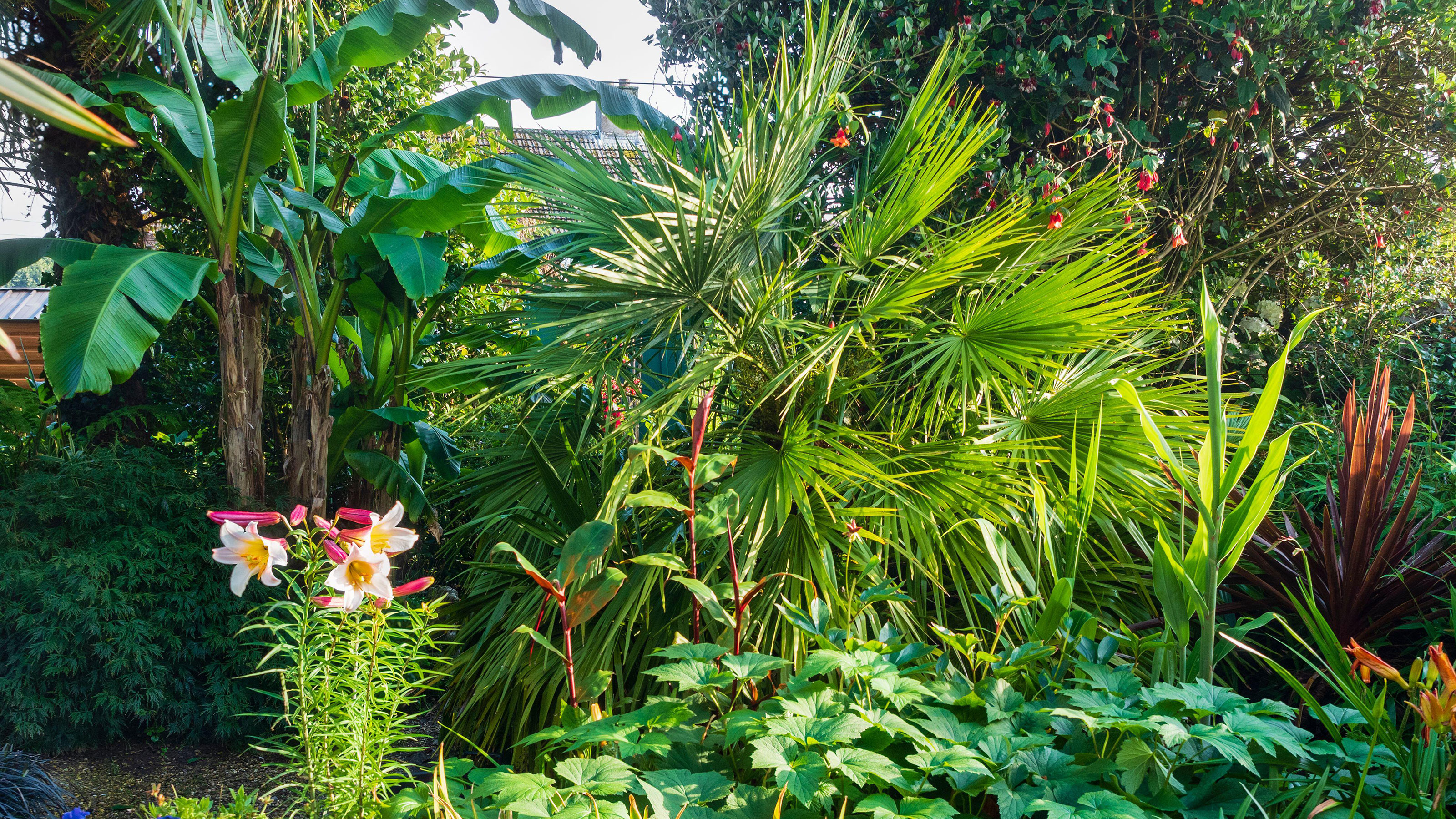
The lush leaves and bold blooms of jungle plants will create a tropical mood in late summer and early fall. If you’re looking for an exciting style of planting to try or you want to create privacy in an urban plot, a jungle-style planting scheme is ideal.
Jungle gardening centers around foliage plants, which mimic the verdant feel of the tropics and are used to create an interesting tapestry of leaf textures, colors, sizes, and shapes.
This cacophony of foliage forms delights the eyes and is planted in layers: the uppermost being a canopy of giant leafy plants. These tower above, blocking out your surrounds, so that you feel transported into another world. The sun glows behind the denser leaves, casting pools of emerald onto the ground, and the finer palmate leaves stencil shadows over the paths. Amongst it all, colorful flowers bloom in the shady depths, conjuring an escapist mood of exotica.
The range of plants on offer for jungle-inspired tropical garden ideas is vast: from huge gunnera, bamboos, and tree ferns to smaller tithonia, cannas, and ferns. Mixed together they produce a dramatic and wonderful tropical mood in the garden.
Include these 16 jungle plants for a tropical look
If you're looking to add some of the best jungle plants to your garden, there are plenty to choose from.
‘Mix is the key word here,’ says Philip Oostenbrink in his new book The Jungle Garden, available from Amazon. ‘It is important to avoid placing plants with similar foliage next to each other.’
1. Tetrapanax papyrifer 'Rex'
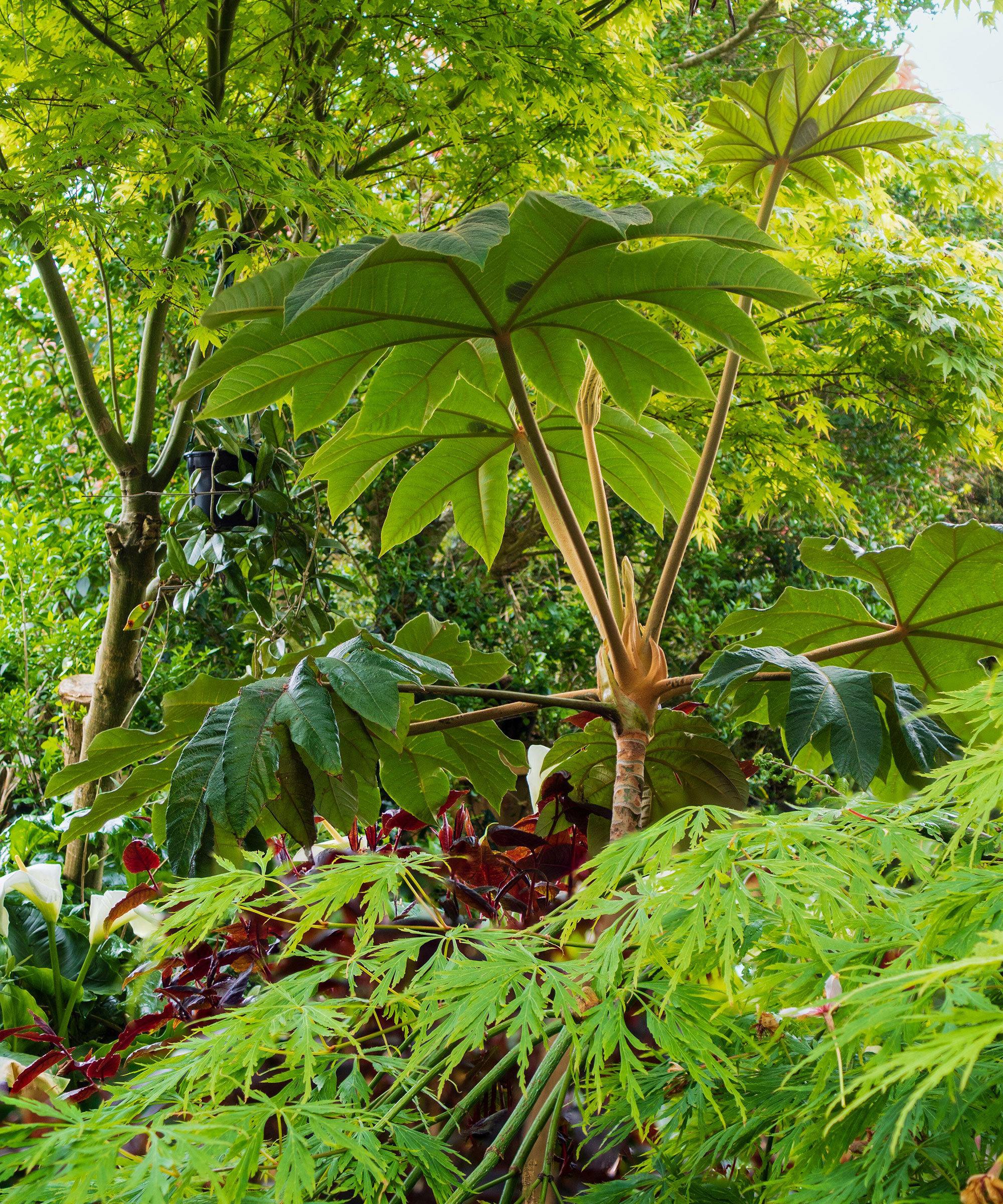
- Hardiness: USDA 8-10 (UK H4)
- Height: 10-16ft (3-5m)
- Spread: 10-16ft (3-5m)
- Best for: Big leaves
This rice-paper plant is a vigorous shrub with huge grey-green leaves. In colder areas make sure you protect plants from frost by removing the leaves and covering the crown with bracken or straw in late fall.
Plant with Trachycarpus wagnerianus in sheltered sun and wear a mask when handling it, as the indumentum can cause irritation.
2. Ensete ventricosum ‘Maurelii' AGM
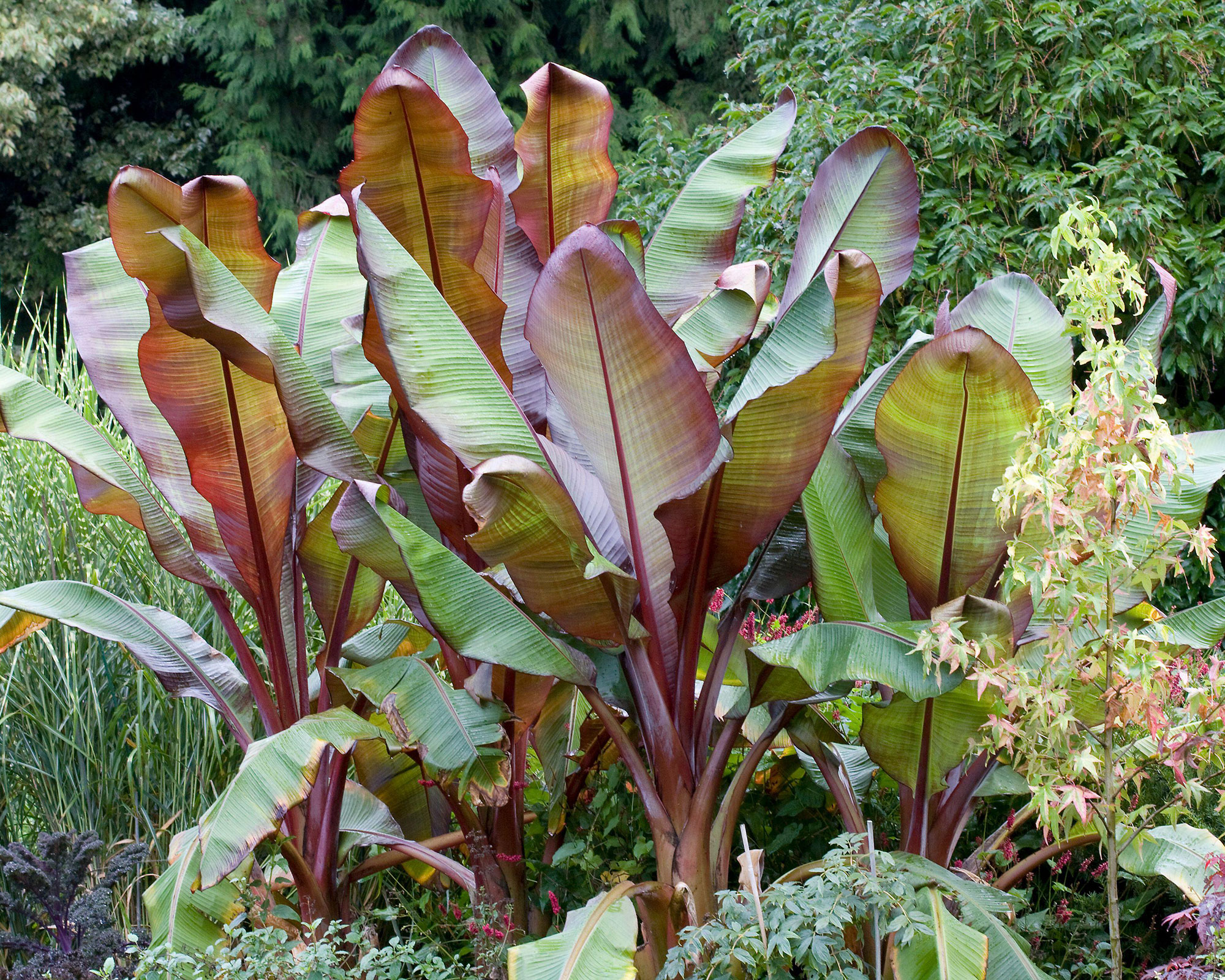
- Hardiness: USDA 8-11 (UK H2)
- Height: 8-10ft (2.5-3m)
- Spread: 6-8ft (2-2.5m)
- Best for: Color
Including tropical plants in your plot is a great way to introduce statement foliage. The Ethiopian black banana has stunning large paddle-shaped upright leaves that glow claret in the sun, creating an eye-catching focal point. Grow with Helianthus salicifolius in well-drained soil in sheltered sun or semi-shade.
Lift and dry to overwinter indoors, or grow in a large garden planter that can be wheeled inside in late fall.
3. Trochodendron aralioides

- Hardiness: USDA 6-7 (UK H4)
- Height: 10-15ft (3-4.5m)
- Spread: 8-10ft (2.5-3m)
- Best for: Evergreen foliage
The gorgeous wheel tree is a slow-growing evergreen shrub or small tree with attractive green leaves, which turn bronze in winter, and lime-green flowers during late spring and early summer.
Grow with Fargesia murielae in well-drained, moist, fertile neutral to acid soil types in sheltered semi-shade.
4. Arundo donax var. versicolor
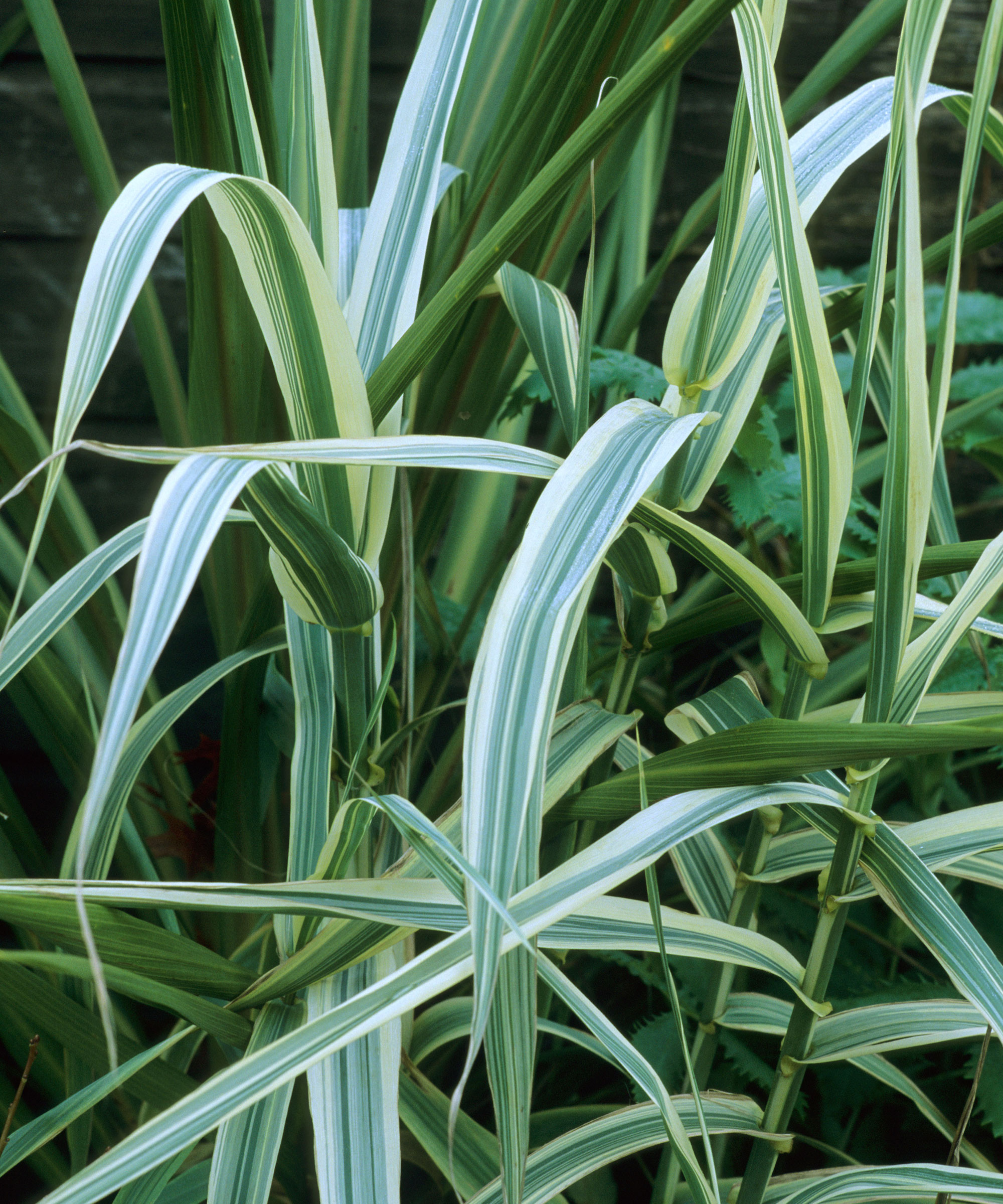
- Hardiness: USDA 6-10 (UK H4)
- Height: 6ft (1.8m)
- Spread: 3ft (90cm)
- Best for: Pale foliage
The variegated giant reed is a white and green grass that is grown with black Colocasia in the Exotic Garden at Great Dixter in the UK. ‘There is such contrast in shape and color between the two – that’s why it’s a striking combination,’ says Fergus Garrett, who created the garden with Christopher Lloyd. It grows best in sheltered sun.
Do not plant in the midwestern US, as it is listed as an invasive plant.
5. Begonia luxurians AGM
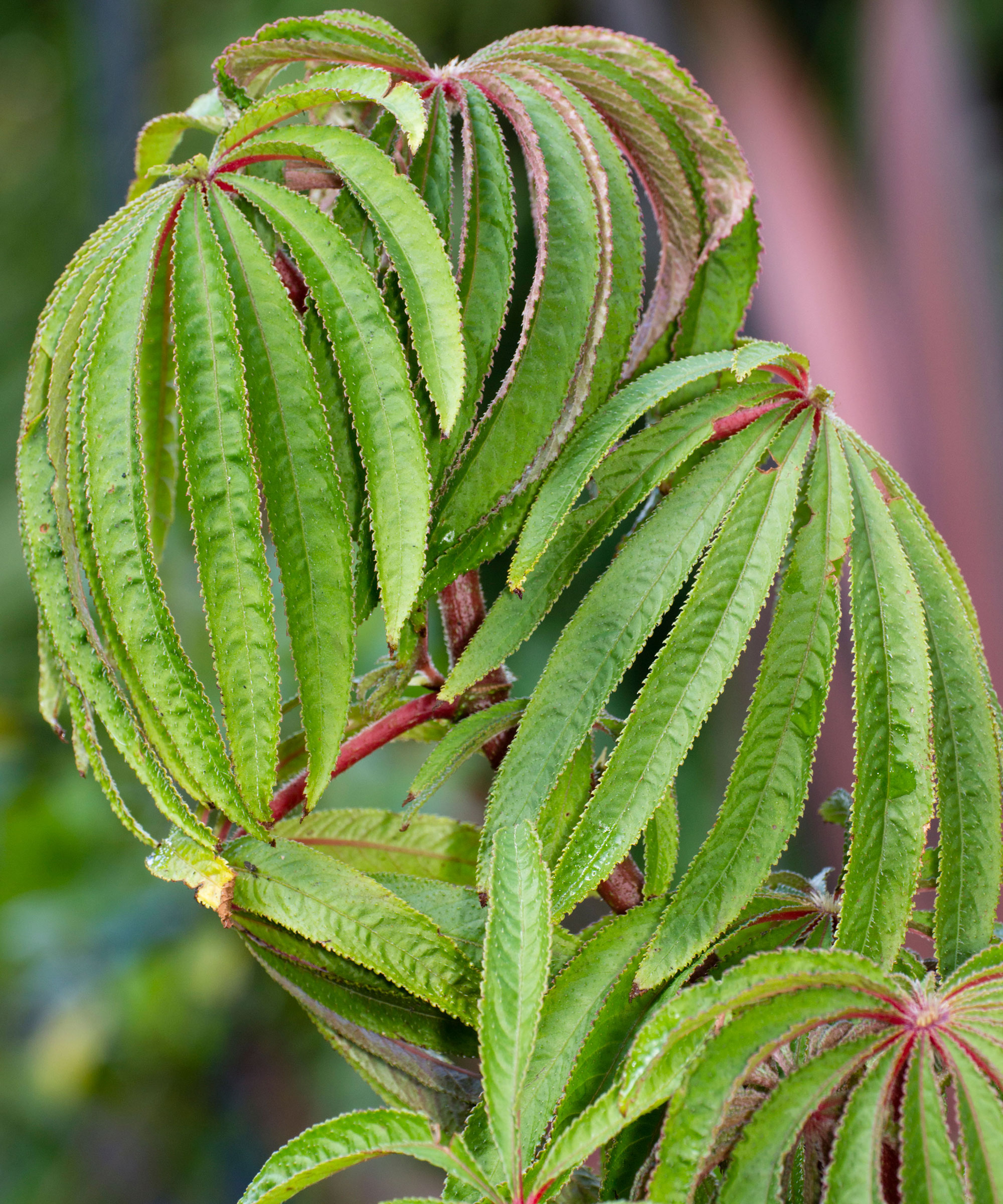
- Hardiness: USDA 9-12 (UK H1B)
- Height: 5-6ft (1.5-2m)
- Spread: 3ft (90cm)
- Best for: Colorful stems
The palm leaf begonia has incredible palmate leaves on red cane stems. ‘B. luxurians isn’t hardy but easy to overwinter by cutting back the stems and placing in a frost-free garage,’ says Philip Oostenbrink.
Grow with Verbena bonariensis in sheltered semi-shade, in well-drained neutral to acid soil.
6. Miscanthus sinensis ‘Zebrinus’ AGM
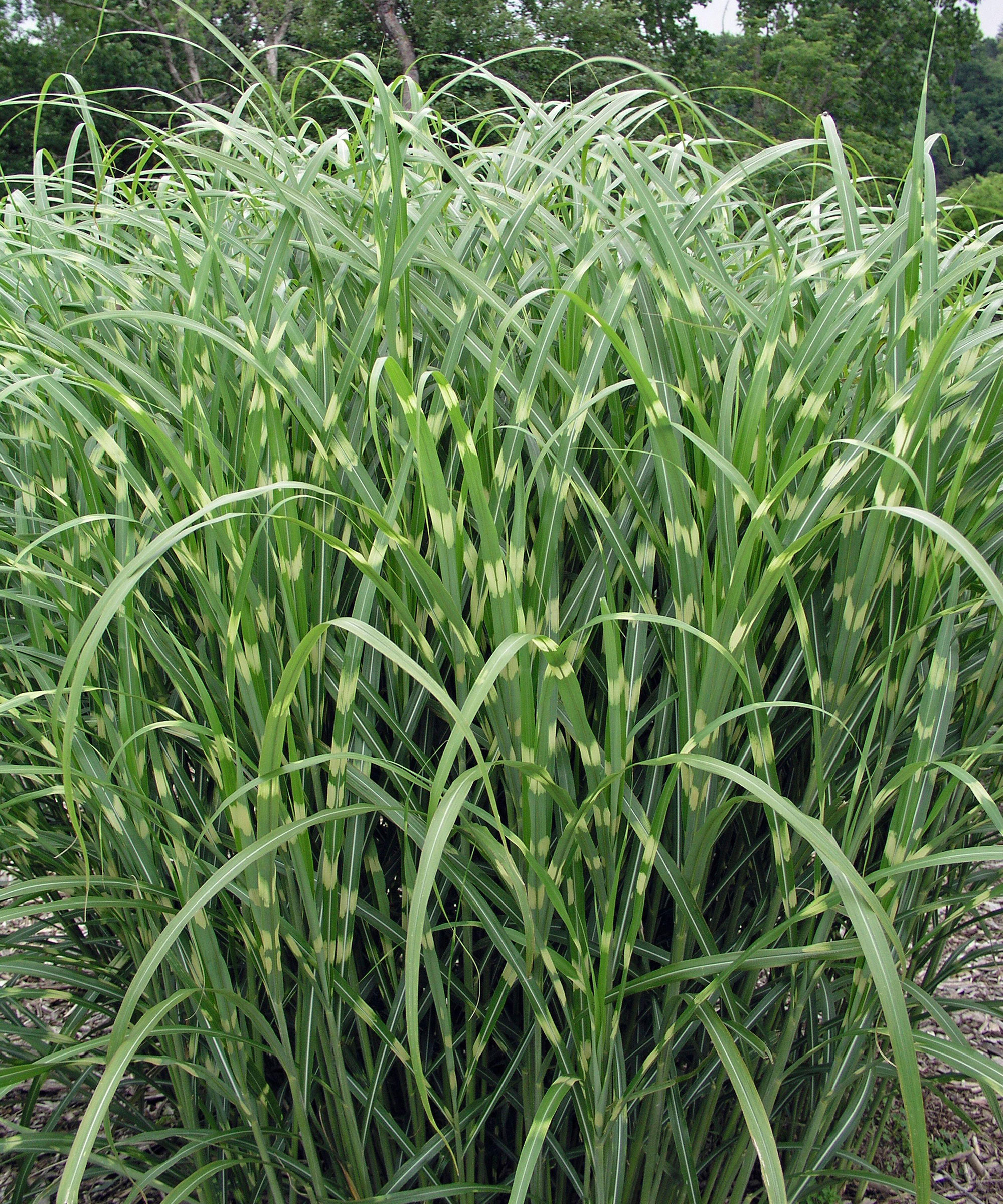
- Hardiness: USDA 5-9 (UK H6)
- Height: 5-6ft (1.5-2m)
- Spread: 4ft (1.2m)
- Best for: Sound
The zebra grass is a fabulous deciduous type of ornamental grass, forming upright clumps of slender green leaves marked with ivory stripes. Plant in earshot of an outdoor seating area because it rustles on the breeze.
Plant this hardy grass with Tithonia rotundifolia ‘Torch' in well-drained soil in sun. For best results, cut it back in mid spring.
7. Colocasia esculenta 'Pink China’

- Hardiness: USDA 6-10 (UK H3)
- Height: 2.5-3ft (75-90cm)
- Spread: 2ft (60cm)
- Best for: Leaf shape
This taro has 2ft (60cm) heart-shaped green leaves on pink stalks. ‘A lot (of Colocasia) are very difficult to overwinter, but C. esculenta ‘Pink China’ is very reliable and hardy,’ says Philip.
Grow with Ophiopogon planiscapus 'Kokuryu' in moist, well-drained soil in sun or semi-shade.
8. Hakonechloa macra ‘All Gold’
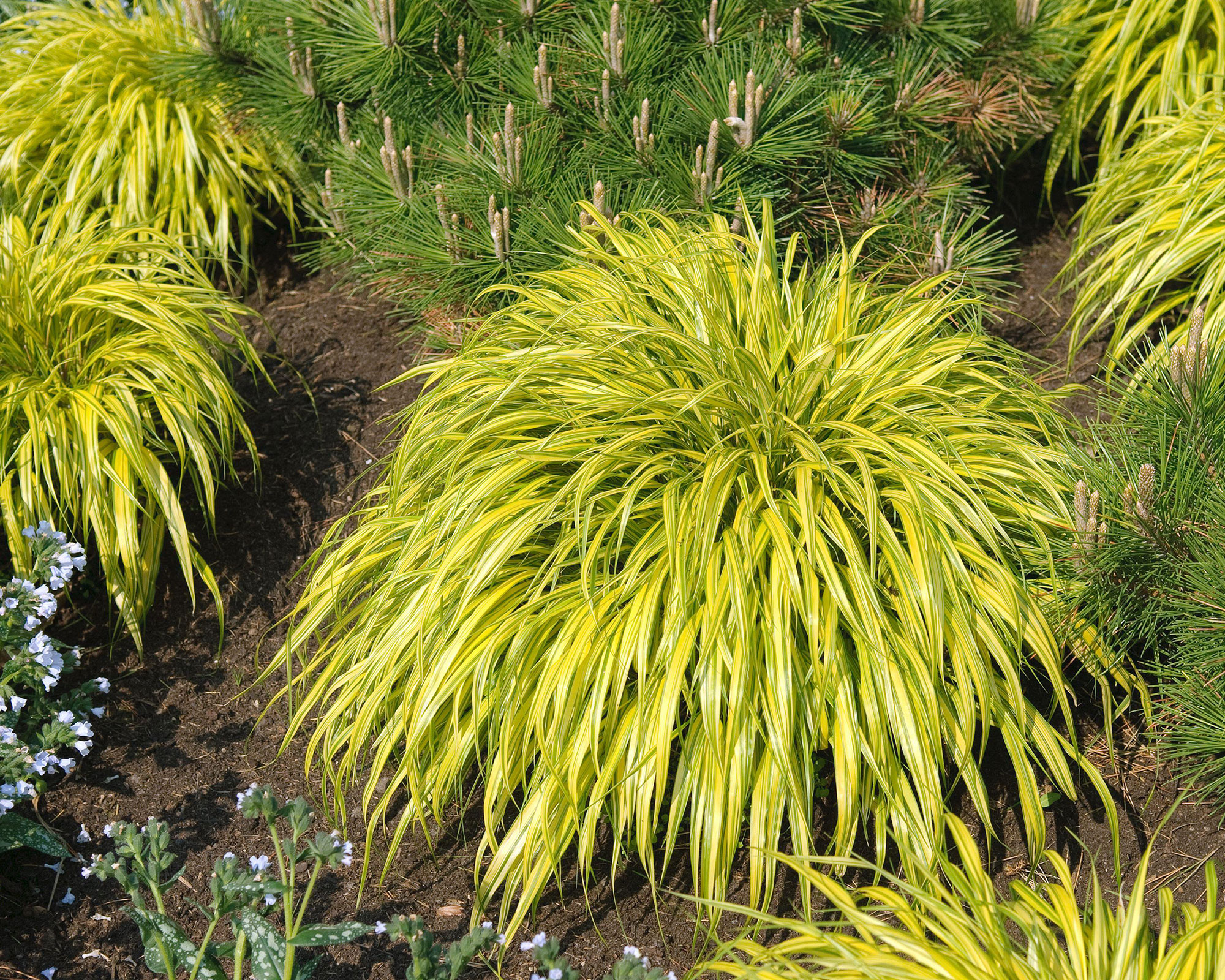
- Hardiness: USDA 5-9 (UK H7)
- Height: 12-18in (30-45cm)
- Spread: 12-18in (30-45cm)
- Best for: Injecting light
This semi-evergreen hardy grass forms mounds of arching ribbon-like leaves that are golden yellow in sun and a glowing shade of lime yellow in semi-shade.
Grow in very well-drained garden borders or as part of your container gardening ideas. It looks good alongside pink-flowered giant herb robert, Geranium maderense.
9. Paris polyphylla
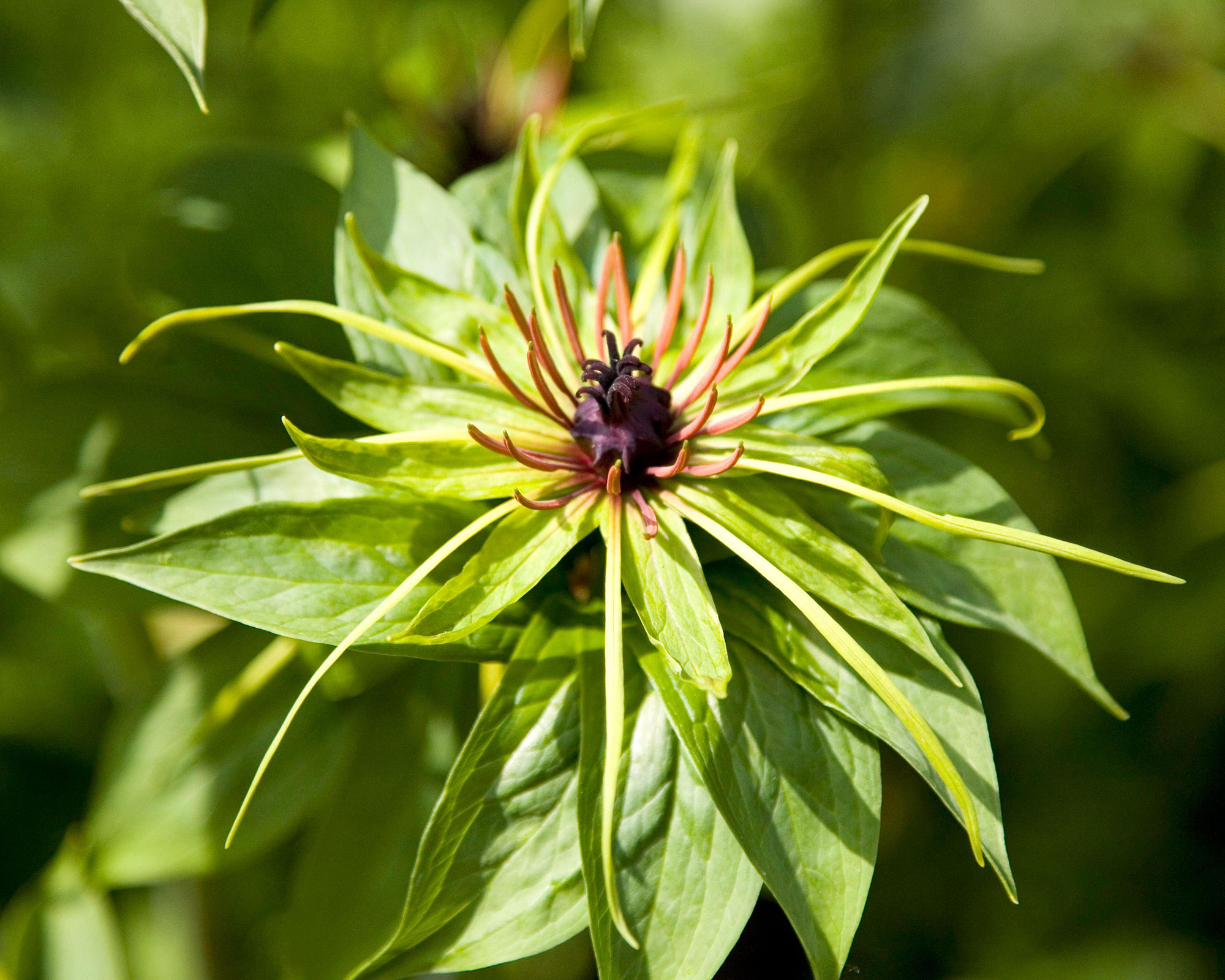
- Hardiness: USDA 5-10 (UK H3)
- Height: 1-3ft (30-90cm)
- Spread: 12in (30cm)
- Best for: Architectural flowers
Many-leaved paris is a splendid perennial that produces parasol-like green flowers above layers of leaves in summer. At the famous Beth Chatto gardens in the UK, it is combined with Hosta ‘Blue Danube’.
Grow in moist, well-drained soil in sheltered shade and protect emerging shoots from frost by mulching them with peat-free compost.
10. Hedychium ‘Tara’ AGM

- Hardiness: USDA 8-10 (UK H4)
- Height: 3-6ft (1-2m)
- Spread: 18-30in (45-75cm)
- Best for: Exotic flowers
One of our favorite jungle plants, this ginger lily has torches of fragrant orange flowers in late summer and early fall, above lush, lance-shaped green leaves.
Grow this perennial in sheltered sun with glaucous-leaved plume poppy, Macleaya cordata. Protect plants from winter with mulch if you live in a cold climate.
11. Nicotiana sylvestris AGM
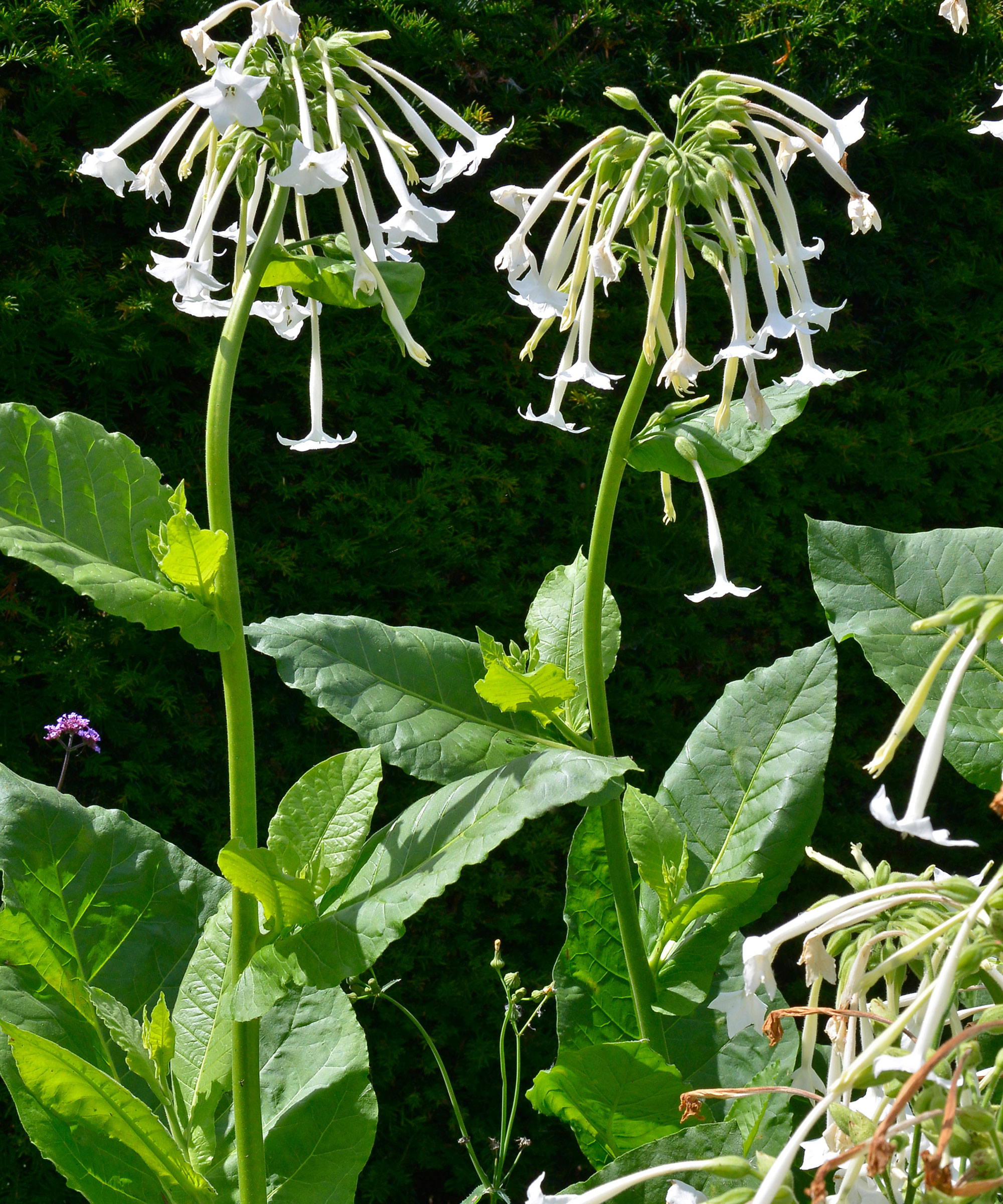
- Hardiness: USDA 10-11 (UK H2)
- Height: 3-5ft (1-1.5m)
- Spread: 18in (45cm)
- Best for: Evening perfume
The woodland tobacco plant produces drooping white flowers that are fragrant on summer evenings, above giant green leaves.
This short-lived perennial is grown as an annual flower in cold climates. Combine with silver Astelia chathamica in moist, well-drained soil in sheltered sun or semi-shade.
12. Euphorbia mellifera AGM
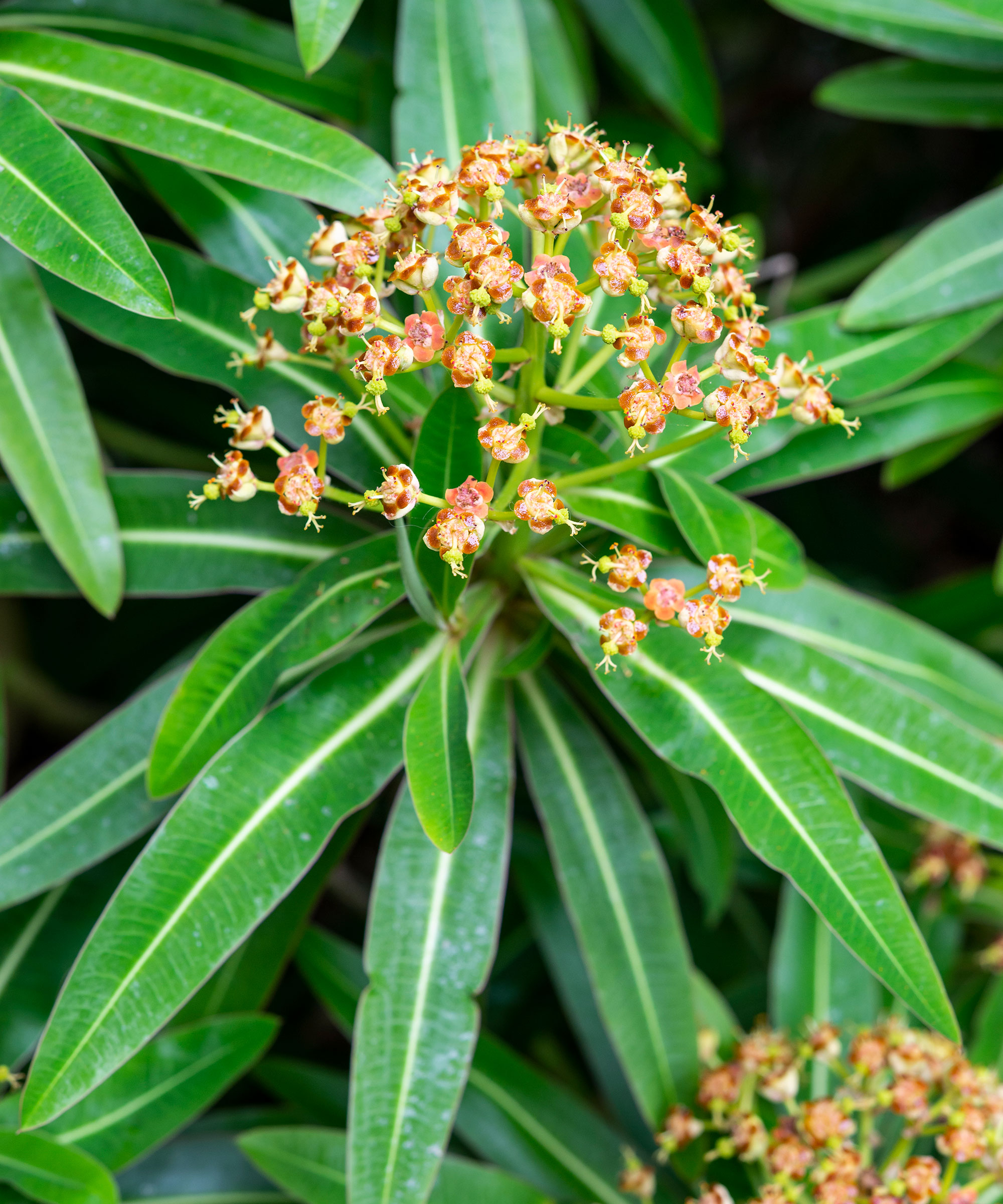
- Hardiness: USDA 9-11 (UK H3)
- Height: 6ft (1.8m)
- Spread: 6ft (1.8m)
- Best for: Scent
The Canary spurge (also known as the honey spurge) is a dome-shaped evergreen shrub with honey-scented copper flowers in spring.
Grow with blue Melianthus major in well-drained soil in sheltered sun and protect in winter with mulch. Wear gloves to prune as the sap is a skin and eye irritant.
13. Canna ‘Wyoming’ AGM
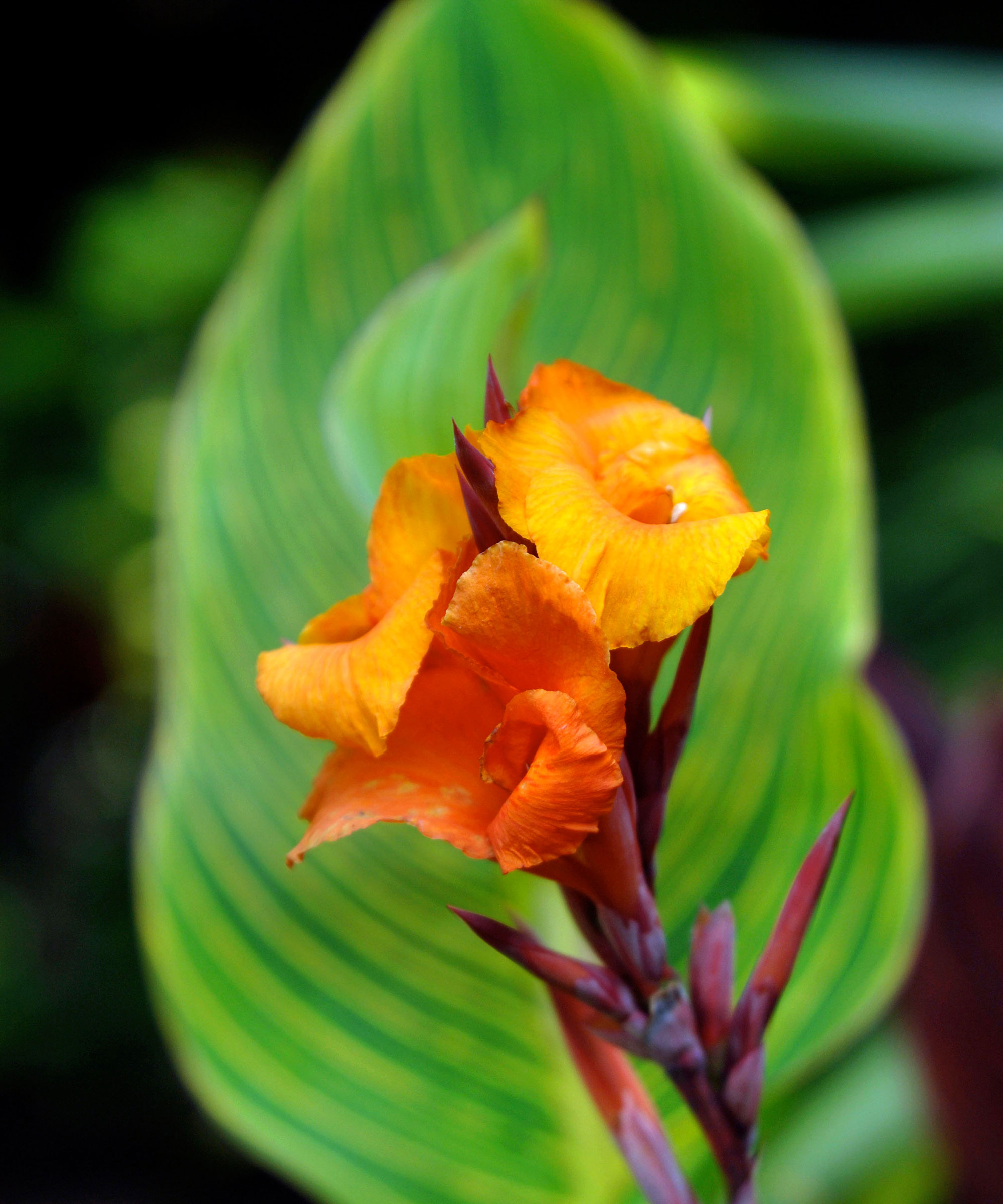
- Hardiness: USDA 7-10 (UK H3)
- Height: 4-8ft (1.2-2.5m)
- Spread: 1.5-5ft (45cm-1.5m)
- Best for: Bold flowers
A must for any list of jungle plants, this features torches of blazing orange above immense bronze-purple leaves in late summer and early fall. At Great Dixter, ‘Wyoming’ grows with rice-paper plant and dahlias.
Lift the rhizomes in late fall and overwinter in peat-free compost indoors. In mild areas, leave in the ground and cover with dry mulch.
Cannas are also known to be good drought-tolerant plants, so these are a good choice if you experience hot, dry summers.
14. Dahlia ‘Honka Red’
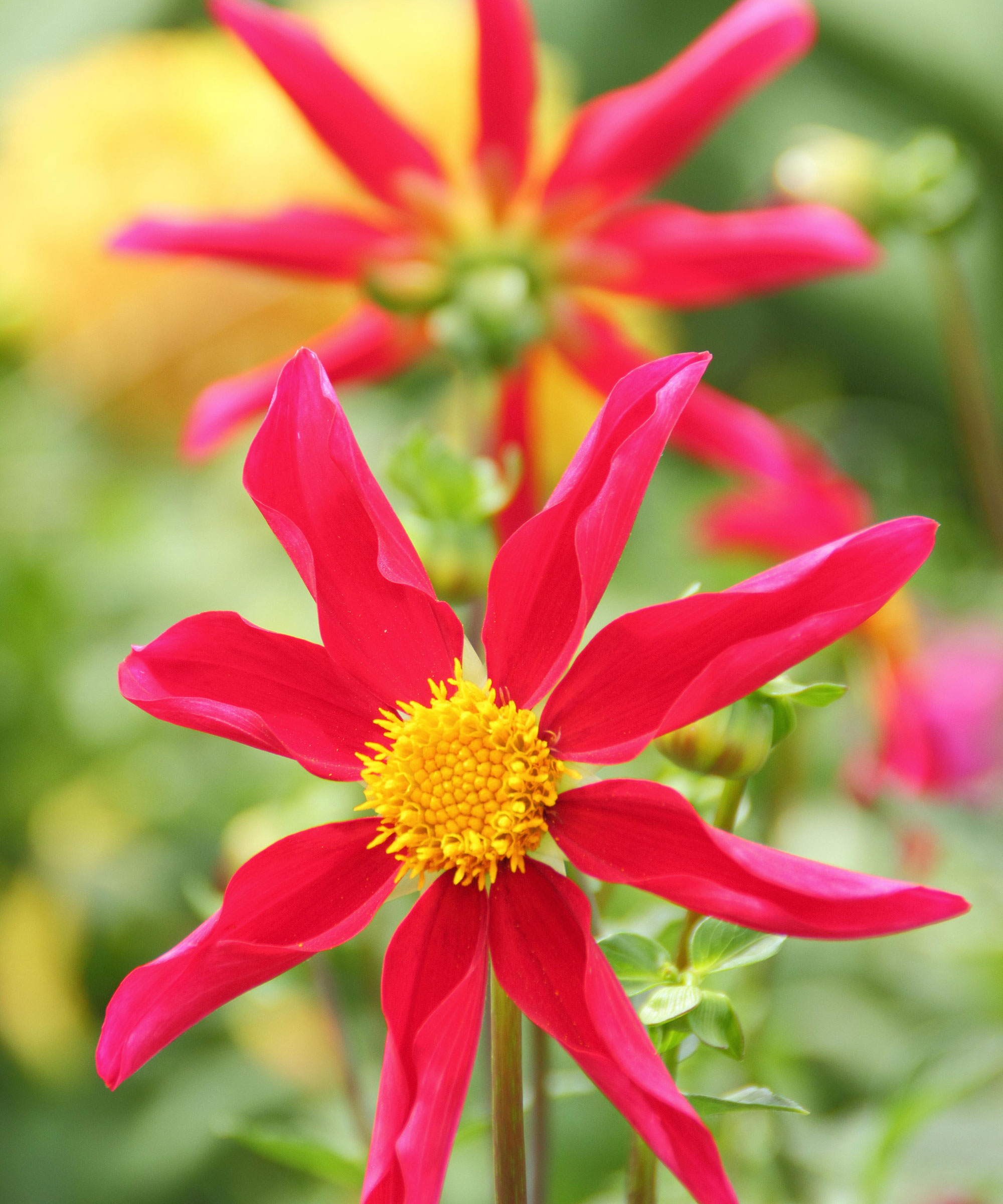
- Hardiness: USDA 7-10 (UK H3)
- Height: 2.5ft (75cm)
- Spread: 1.5ft (45cm)
- Best for: Cut flowers
This fantastic type of dahlia has starry scarlet flowers with a golden boss, from mid summer to early fall.
Grow in sheltered sun in humus-rich well-drained soil with orange Crocosmia ‘Limpopo’.
If you're learning how to grow dahlias in a cold region, lift the tubers in fall and store indoors. In mild areas, you can leave in situ and cover with a thick mound of mulch.
15. Cleome hassleriana 'Violet Queen’
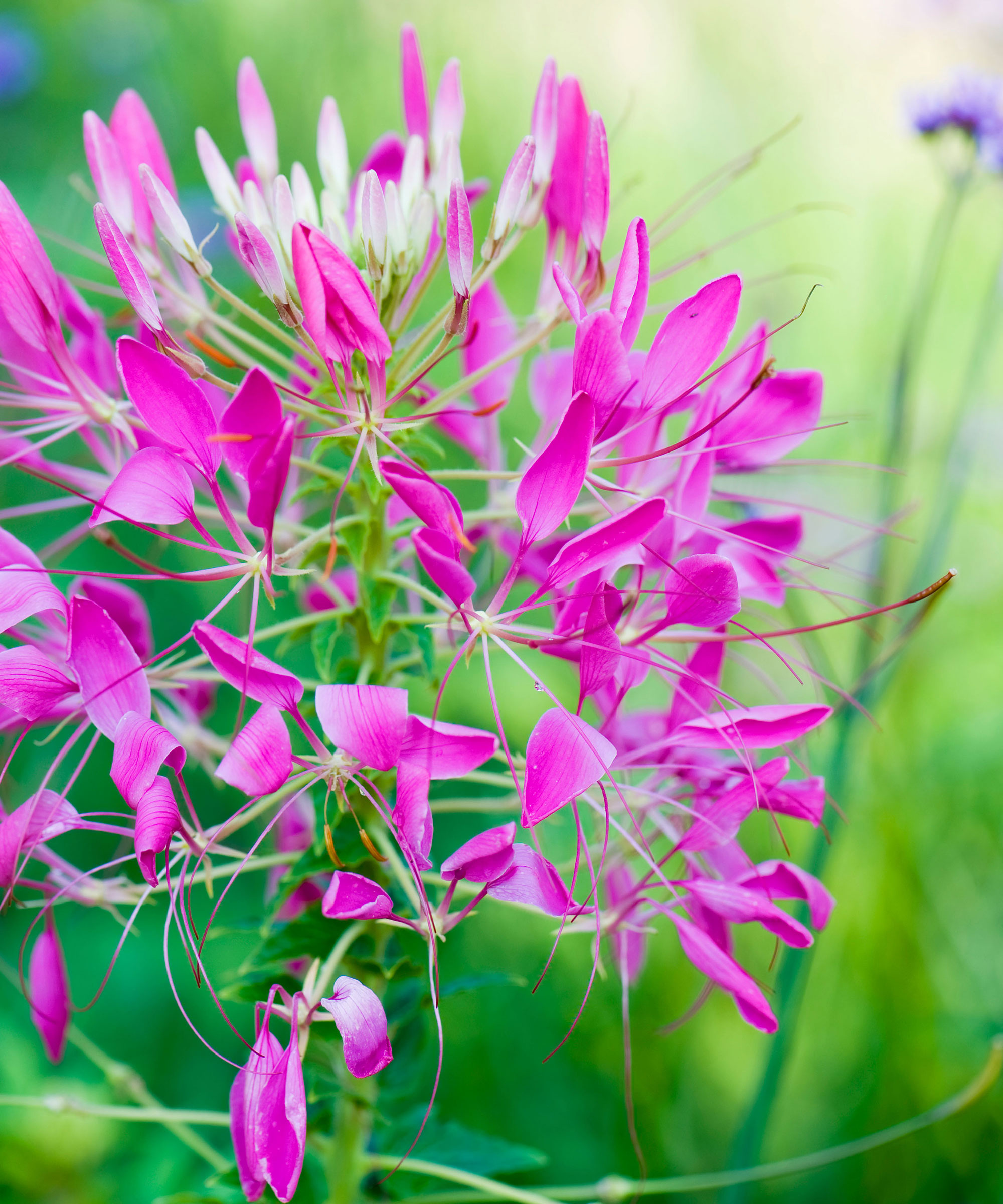
- Hardiness: USDA 9-10 (UK H2)
- Height: 3-4ft (90cm-1.2m)
- Spread: 1.5ft (45cm)
- Best for: Butterflies
This spider flower is a flamboyant annual with pink-purple flowers that have long, wispy stamens, in late summer and early fall.
Sow under cover in early spring or buy as bedding in early summer. Plant in well-drained soil in sheltered sun with Ricinus communis ‘Carmencita’.
16. Ipomoea lobata AGM
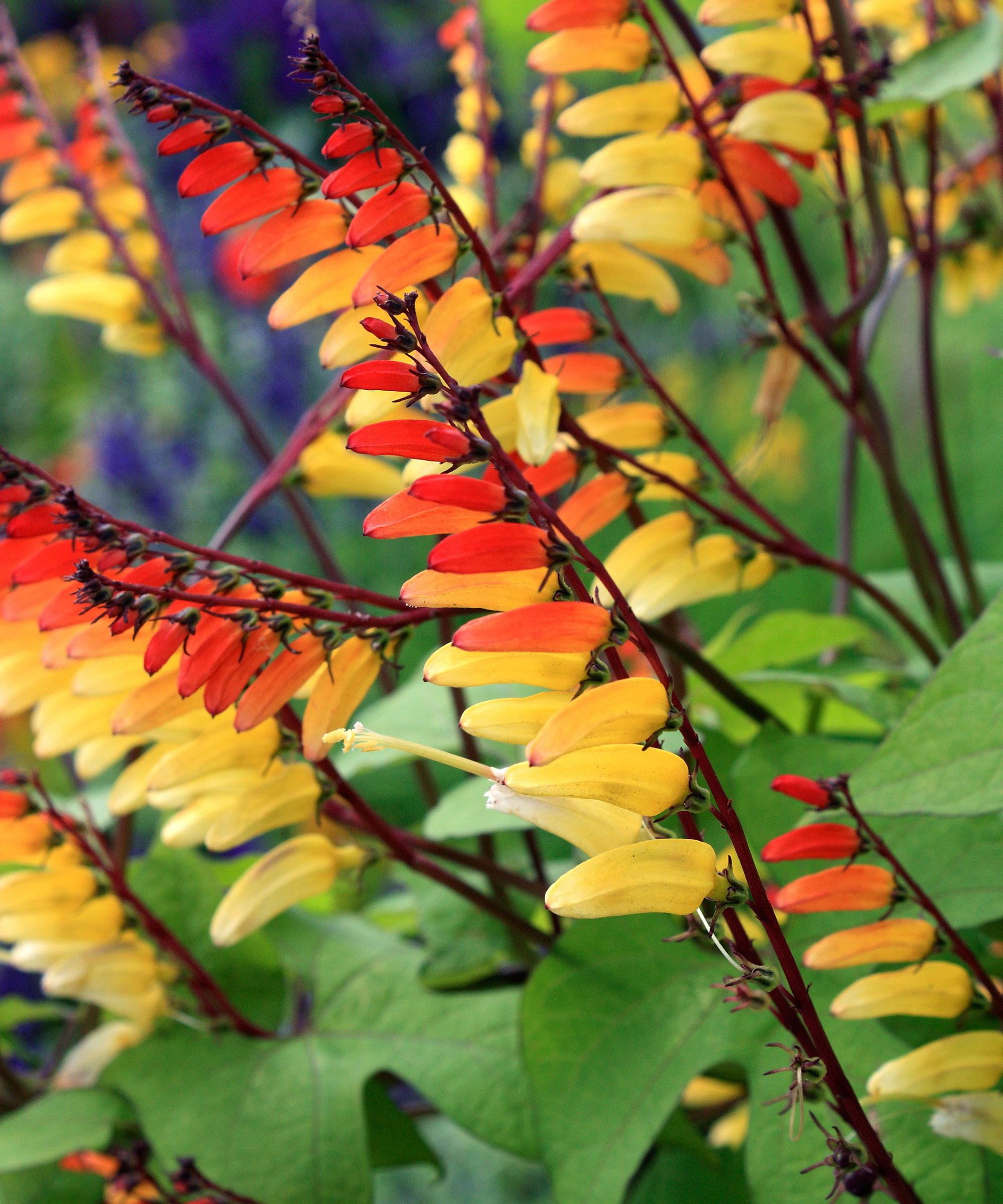
- Hardiness: USDA 10-11 (UK H1C)
- Height: 3-12ft (1-4m)
- Spread: 1-2ft (30-60cm)
- Best for: Hummingbirds
The Spanish flag is a climbing plant that blazes with flame-like red, yellow, and cream flowers from mid summer to mid fall. Grow as an annual by sowing in early spring or buy as bedding plants in early summer.
Plant in well-drained soil in sheltered sun. At Great Dixter, it is paired with Dahlia ‘Fascination’.
How do you create a jungle border?
‘Tropical gardens get a lot of their appeal from contrast in leaf texture and size,’ says Ohio-based garden designer Ethan McGory. ‘In temperate climates, shade-loving plants tend to have a larger variety of leaf sizes and make the most sense for tropical gardens. Use large-leaved plants like pawpaw, bottlebrush buckeye, hydrangeas, or hostas, contrasted with finer textures like ferns, boxwood, and liriope.’
Combine these plants in layers of planting, starting with the all-important canopy at the top, which sets the mood of a jungle border. Use dense leaves next to feathery, fine, or palmate leaves to allow a patchwork of light to fall onto the floor. Then plant a layer of plants that will reach eye level, and a further 1-2 layers lower down.
In a large garden, create paths that weave amongst the foliage, encouraging exploration. In a smaller plot, a jungle border works well around a seating area, since the plants create a canopy of garden privacy and a mood of relaxing escapism.
‘Placing a jungle garden close to the home or in a courtyard can help add to the tropical feel and sense of space,’ says Ethan, ‘and light colored gravel or stone paving can be a nice contrast to the plants.’

How do you overwinter jungle plants?
Check the winter requirements for each of your jungle plants, as they vary considerably. Some are hardy in all regions; others are only hardy in mild areas; many require protection in situ (such as fleece); and a few need to be lifted and taken indoors.
Japanese bananas (Musa basjoo), for example, can be left in the ground in cold areas if their upper parts are cloaked in fleece, bracken, straw, or hessian. While Ethiopian bananas (Ensete ventricosum) must be overwintered under cover: ‘Ensete can be difficult to overwinter, but a heated greenhouse would be perfect,’ says Philip Oostenbrink.
‘Alternatively, they can be grown as a specimen indoor plant during the cold season. If they are overwintered in a cold garage or loft, make sure to drain all the water out of them before storing. This can be done by cutting all the leaves off and placing them upside down for a few days.’
Moving tender plants indoors is also a smart move for your succulent garden plants in you live in a colder region.
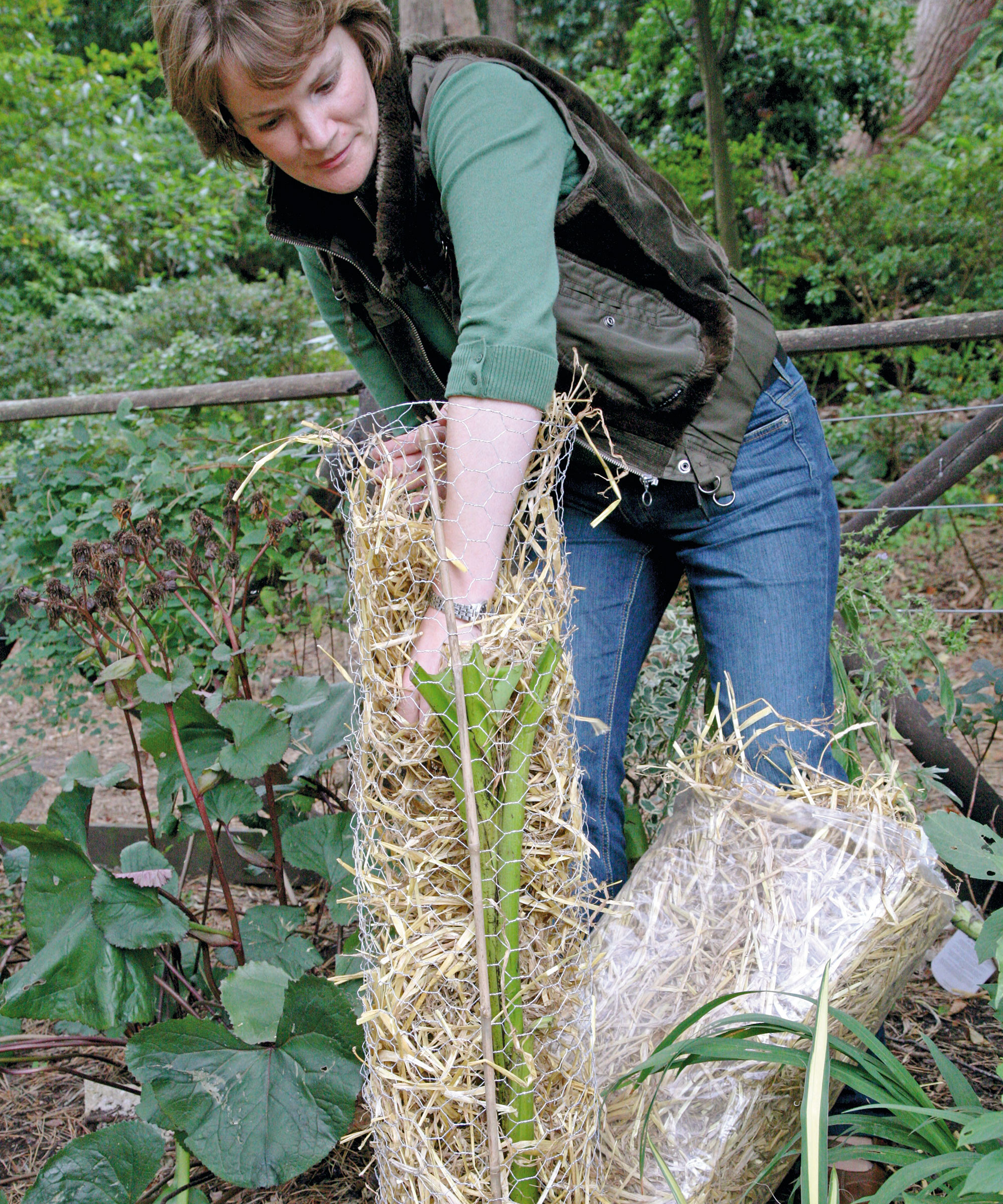
Which jungle plants are hardy?
A huge range of hardy plants can be used to create a jungle look in the garden, including fatsia, elephant’s ears, mahonia, gunnera, crocosmia, and sarcococca.
‘At Great Dixter, we grow many tender plants such as banana and taro by moving or protecting them over winter, but you can easily create an exotic, tropical-looking garden without using one tender plant,’ says Fergus Garrett. ‘Ferns, figs, hostas, yuccas, euphorbias, and bamboos are hardy for instance, and look exotic.’
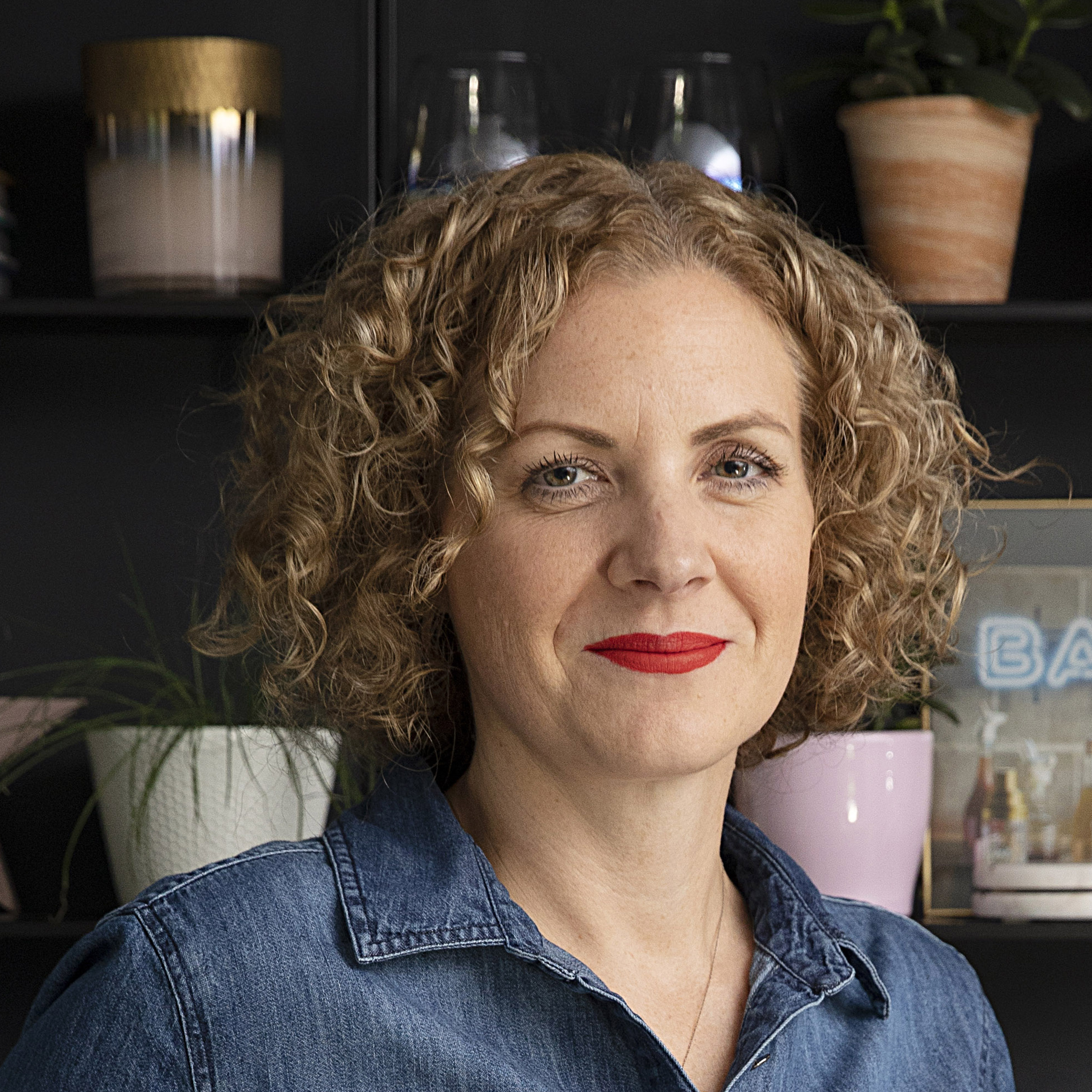
For the past 18 years, Beth has worked for and contributed to a number of leading magazines in the UK, including Real Homes, Ideal Home, Period Living, Grand Designs and Good Homes amongst others. Now the editor of Gardeningetc.com, Beth's attention is firmly outdoors. Her own garden is a really important part of her family's home, and she loves spending time tending to the veg patch or entertaining friends and family at a summer BBQ or alfresco pizza night.
